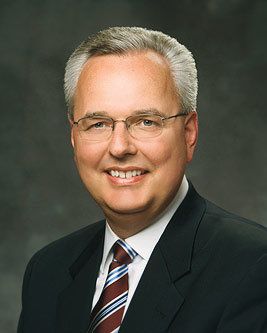The Church of Jesus Christ of Latter-day Saints excommunicated a high-ranking official on Tuesday ― the first time such action has been taken against a church leader in nearly three decades.
The Mormon church confirmed Tuesday that it had removed James J. Hamula from his position in the First Quorum of the Seventy of The Church following disciplinary action.

The church did not state the reason for Hamula’s dismissal, and church representatives did not respond to a request for comment on Wednesday.
But a news release on the church’s website stated that the action was not taken for “disillusionment or apostasy,” which entail publicly defying the principles of the faith.
Other reasons listed for excommunicating leaders in the church handbook include adultery, burglary, embezzlement, spousal abuse and “homosexual relations,” according to The Washington Post.
Excommunication leads to a loss of membership in the church and prohibition from certain activities. Excommunicated individuals may still attend public church meetings, and reentry to the church is possible.
“If a person shows sincere and full repentance and wishes to return to the Church, they will be welcomed,” states an article by the official church newsroom. “Rebaptism is necessary in such cases.”
Hamula, 59, was a member of the First Quorum of the Seventy, a governing body that falls below the church president and the Twelve Apostles. He served as executive director of the Correlations Department, which works to ensure the clear and consistent communication of church rules.
According to a biography on the church’s website, Hamula had served in his post with the First Quorum of the Seventy since 2008. He received a B.A. in political science and philosophy from Brigham Young University in 1981 and a M.A. in political philosophy and a J.D. from the same university in 1985. Hamula practiced law from 1985 until 2008. He is married and has six children.
Hamula has spoken at two of the church’s semiannual General Conferences, in 2008 and 2014, addressing Mormons worldwide.
The last leader excommunicated from the church was George P. Lee, who was removed in 1989. Lee, who was an American Indian, accused the Mormon leadership of racism and was removed for “apostasy and other conduct unbecoming a member of the church.”
Four decades earlier, in 1943, then-apostle Richard R. Lyman was excommunicated from the church for adultery. Lyman and his wife, Amy Brown Lyman, who served as president of the Mormon women’s Relief Society, stayed together. Lyman was rebaptized in the church a decade later, according to The Salt Lake Tribune.
In a column published Tuesday, Mormon writer Jana Riess questioned whether church members deserved greater transparency from LDS leaders regarding Hamula’s excommunication.
“On the one hand, confidentiality can protect excommunicants and their families from unwanted and unhelpful judgment. It leaves the door open for a potential rebaptism and restoration of blessings,” she wrote.
But Riess noted that gossip and misinformation tend to flourish when the truth remains hidden.
“Some things are private and deserve to remain private: loss of faith, for example. Some problems, however, have a community component and deserve to be made known, things like financial misdeeds, predatory sexual behavior or repeated lying to the community,” Riess wrote.
“I put my trust in this person. What happened to betray that trust?”

